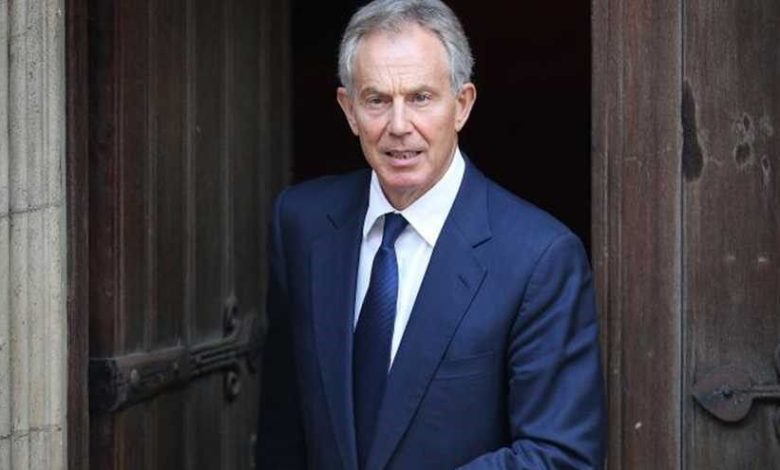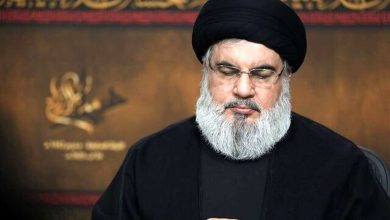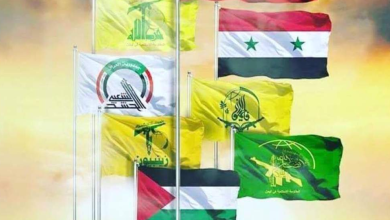Tony Blair in Gaza? A new colonialism disguised as diplomacy

 Hawraa al Massri:
Hawraa al Massri:
The six-year-old Gazan child, “Ali al-Madhoun,” stands before the rubble of his home in the heart of the Strip, clutching the torn doll that has accompanied him since the beginning of the extermination. It is now his only friend left from former memories—no family, no home, nothing remains for him but pain and suffering.
Who will tell this child that the war on Gaza has now begun? Who will tell him that a merciless criminal will assume control of his area? Who will inform him of the deeds of the deceitful Tony Blair, who long supported foreign invasions of the Middle East—most famously the 2003 invasion of Iraq? But the question that arises today is: will history repeat itself over Gaza?
Handing Gaza’s administration to some Western façade is nothing but a covert occupation that aims to erase will and domesticate struggle. Will this plan come to fruition?
“Blair returns to the forefront”
Tony Blair, a leading figure of Britain’s Labour Party and prime minister of the United Kingdom from 1997 to 2007, has been highly controversial for his wide ties with global political figures such as George W. Bush; he helped Bush invade Iraq in 2003—an action still contentious because it rested on the false claim that Iraq possessed weapons of mass destruction. Iraq was not the only country to suffer Blair’s malice; Afghanistan did too.
Tony Blair is returning to the Middle East again, in an American initiative, with British support, to hand Gaza’s administration to him. This is a deliberate political plan to reimpose dominance and blatant interference in the region under the guise of assistance. Such interference will not be limited to politics but will extend to all fields—economy and media—serving as modern tools to rebuild a Western presence that facilitates imposing their agenda in the Middle East.
Blair did not stop at destroying Iraq and Afghanistan; now he aspires to finish off Gaza and render it incapable of fighting. The question creeping into our minds is: how will this decision affect Gaza and the resistance?
“Guardianship in new clothes”
Gaza now faces a pivotal stage. The political plan being pursued by Trump is nothing but an attempt to exclude Gaza from the axis of resistance and place it under international leadership headed by Blair. Notably, The Independent published an article on this plan indicating that Hamas would not be part of the interim authority that would govern Gaza. The main objective of Blair’s presence thus appears to be the marginalization of the resistance and its political erasure.
This is not limited to removing Hamas from Palestinian authority; it severs Hamas’s political and jihadist ties with Lebanon, Iran, Yemen, and Iraq—the states that formed the resistance axis that has long supported Gaza and the Palestinian resistance. Here we face cutting off the logistical support that has preserved the resistance’s presence in Gaza.
The plan does not stop at preventing logistical support and severing ties between the resistance axis and Hamas; it entails turning humanitarian resources into mechanisms of surveillance and dependency that serve Western political projects—reconstruction in exchange for implementing American-Zionist agendas—and reframing the resistance from a legitimate Palestinian cause into an internal security issue. But how would this be implemented on the ground?
“Implementing the dominance plan under the pretext of reconstruction”
When we hear of an interim authority to be established in Gaza, many questions arise: how? How will it be implemented in the field?
Because the U.S. administration uses the pretext of reconstruction, rebuilding, and reform, the process will necessarily involve bringing in Western political and administrative experts who previously worked in civil administration and reconstruction. Yet these politicians carry hidden agendas beneath the mask of reform. They will impose financial oversight mechanisms and reform policies linked to Western and foreign agendas that exclude the resistance and replace it with integration projects subject to external supervision.
This goes beyond isolating the Strip and the resistance; narratives will be spread through the media claiming that economic peace and efficient governance are Gaza’s only solutions, portraying resistance as nothing but destruction and ruin for the Palestinian people, especially Gazans.
“Strategic messages to the resistance axis”
The resistance axis faces a difficult task in proving the jihadi presence in Gaza, particularly after the announcement of this plan pursued by Trump and his government. The resistance must preserve, as far as possible, political and logistical contact and funding for Gaza from its allies, and insist on its inclusion within the political framework of any transitional international administration. Any foreign Western guardianship must not nullify the legitimacy of local resistance representatives.
The Palestinian resistance should not be content with mere statements; it must intensify regional coordination with Lebanon, Iran, Iraq, and Yemen to ensure its ability to deter any force seeking to isolate the Strip. It should also use media channels to convey the idea that “reconstruction without freedom is nothing but a clear surrender of the cause and a waste of the blood of its martyrs.” Just as Hamas succeeded in shifting the balance of power after the October 7 war, it is certainly capable of confronting such a plan to erase the cause.
“The Western contradictory rhetoric”
The West and some normalization-minded mediators have never used an explicit discourse about foreign guardianship or about the occupation’s violations of international law. Instead, they employ tortuous, ambiguous language—peace, reconstruction, competent governance—that hides their true aims. These are the slogans Western states have long chanted, and contradiction dominates their rhetoric.
They sometimes talk about Palestinian interests while imposing conditions that serve their own regional aims. For example, the current plan excludes the resistance from any political representation in the interim authority, which contradicts the democracy they claim to uphold.
The fundamental question on the table is: why hand authority to those who waged wars against the nation? If we recall the history of the Iraq invasion that led to its destruction under Tony Blair, whose name is now being proposed as a governor for Gaza, the irony is stark.
Reconstruction does not mean we lose our land and resistance. Real reconstruction is built by the people’s hands and under national sovereignty, not under Western guardianship that seeks to break the resistance and impose hegemony. Reconstruction and dignity cannot be achieved under guardianship.
The mistake does not lie solely with Western states but with the normalization mediators who support whatever the West says, indifferent to peoples’ lives, especially Palestinians. The strategy of promoting occupation under the guise of humanitarian aid must stop.
Gaza now faces a set of scenarios that may tighten the noose rather than resolve it. To understand the Strip’s current situation, one must consider the scenarios confronting the resistance and Gaza as a whole.
“What if?”
Gaza stands before several possible scenarios, especially after the announcement that Tony Blair is among the candidates to lead the Strip. The first and worst scenario is that this so-called transitional phase drags on for many years, effectively leaving Gaza occupied by both Zionists and Westerners. The continued presence of such forces would politically dismember the Strip and marginalize it so that it lacks a political voice representing its people. The worst and most dangerous outcome is that the plan aims to dismantle resistance networks and squeeze them until they are isolated from the outside, thereby breaking the resistance.
The scenario most likely to be implemented is that of local and regional resistance imposing conditions on this guardianship, forcing it to retreat and returning governance to the Palestinian Authority and local administration.
A third, military scenario: some regional states supporting the Palestinian resistance might impose a new balance of power, causing this guardianship to step aside and restoring affairs to their normal course. The resistance axis could also adopt a severe and serious posture publicly denouncing such tricks that do not deceive the resistance.
“Gaza’s appeal to its axis”
Any guardianship in the name of reconstruction is an attempt to erase the cause; dignity is restored through the sovereignty of the people, not by handing over the keys of its cities to those who contributed to the region’s destruction. Today the Palestinian people must support their resistance with all the strength God has given them; this reconstruction is nothing but a political cover for Western agendas.







